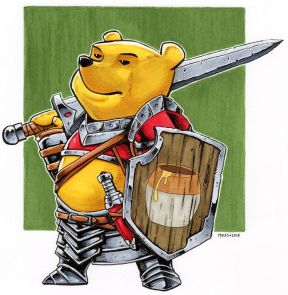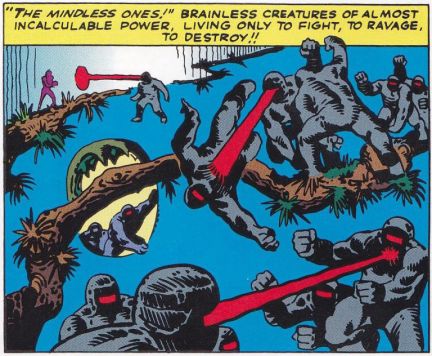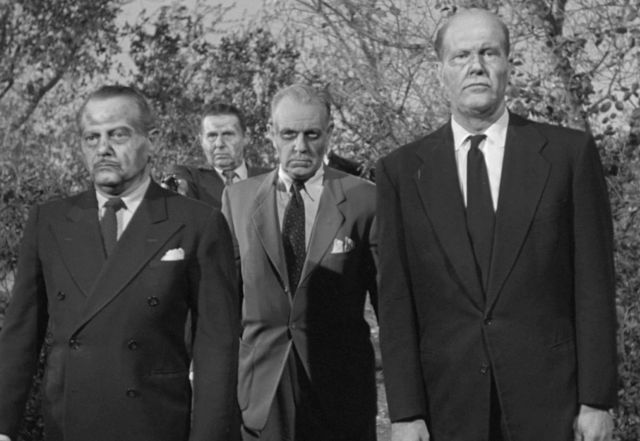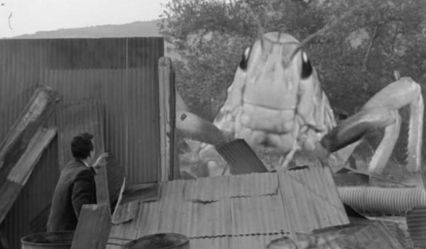Roar of the Thunder Bird
All Spes Magna Games products are still on-sale this month for at least 25% off their regular prices so that I can help you help me celebrate my 25th wedding anniversary. Huzzah!
But I digress.
Earlier this week, I pulled my AD&D Deities & Demigods off the shelf. What a great book, but also a strange book. Much ink, virtual and real, has been spilled over the idea of giving gods and goddesses stat blocks, as if they were a new category of monster to be defeated by adventurers. While I agree that the idea of any group of adventurers facing down the likes of Odin or Ares in combat is absurd, I also cannot ignore the examples in myth of mortals facing down deities and living to tell the tale. Diomedes, for examples, injures Ares in battle, stabbing the god of war in the belly with a spear. (Yes, yes, I know that Diomedes had divine assistance in this task.)
Deities & Demigods also includes several magic items, some on the level of artifacts and relics, as well as more traditional monsters that could serve as foes or allies for adventurers. I remember our characters fighting minions of Set during part of (I3) Pharaoh (one of the best AD&D modules ever published).
Flipping through the pages of Deities & Demigods inspired me to write what follows. Enjoy!
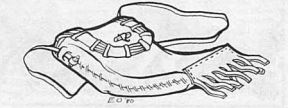
Sacred Bundle
Wondrous item, legendary (requires attunement by a barbarian, fighter, paladin, or ranger)
Only a tribal priest aided by a summoned spirit can create a sacred bundle, and each sacred bundle is created for a specific warrior. The sacred bundle appears to be a satchel made of animal hide, decorated with beads and embroidery. It contains 1d6+4 items, all but one chosen by the summoned spirit. The tribal priest creating the sacred bundle chooses the final item in the satchel. The warrior for whom the sacred bundle is made must collect the items, and they’re all dangerous or difficult to acquire. For example, the warrior may have to collect “a rattle from a cave of giant snakes, a feather from a high nesting giant eagle, or the hair of 13 enemies killed in battle”. When all necessary items are collected, the tribal priest places them in the satchel and sews it shut.
As long as the warrior carries the sacred bundle, he makes all saving throws and Wisdom (Perception) checks with advantage. All melee and ranged weapon attacks against the warrior are made with disadvantage. Furthermore, the warrior has resistance to bludgeoning, piercing, and slashing damage.
And, now, a new legendary monster: the Thunder Bird!
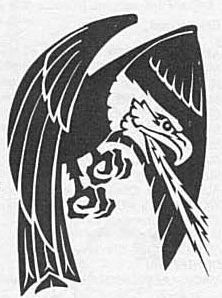
Immortal. The thunder bird cannot be killed. Even if slain, it appears again, ready to fight evil anew.
Omen. The thunder bird’s appearance warns of great evil, and the thunder bird itself often takes part in the battle against this evil.
Servant of None. The thunder bird cannot be summoned or compelled to act. It is its own creature.
Thunder Bird
Large celestial, chaotic good
Armor Class 22 (natural armor)
Hit Points 202 (27d10+54)
Speed 45 ft., fly 90 ft.
Ability Scores STR 22 (+6), DEX 23 (+6), CON 15 (+2), INT 18 (+4), WIS 16 (+3), CHA 17 (+3)
Saving Throws STR +11, CON +7, WIS +8
Skills Perception +8
Damage Immunities lightning, thunder
Senses passive Perception 18
Languages Auran, Celestial, Common
Challenge 16 (15,000 XP)
Independent. The thunder bird is immune to any magical effect that would influence its emotions, thoughts, or will. Charisma checks made to influence the thunder bird are made with disadvantage.
Keen Sight. The thunder bird has advantage of Wisdom (Perception) checks that rely on sight.
Legendary Resistance (3/Day). If the thunder bird fails a saving throw, it can choose to succeed instead.
Rejuvenation. If it dies, the thunder bird returns to life in 1d6 years and regains all of its hit points. Not even a wish can prevent this trait from functioning.
Actions
Multiattack. The thunder bird makes two attacks: once with its beak and once with its wings.
Beak. Melee Weapon Attack: +11 to hit, reach 5 ft., one target. Hit: 17 (2d10+6) slashing damage plus 5 (1d10) lightning damage.
Wings. Melee Weapon Attack: +11 to hit, reach 10 ft., one target. Hit: 28 (4d10+6) bludgeoning damage plus 11 (2d10) lightning damage.
Lightning Breath (Recharge 5-6). The thunder bird exhales lightning in a 120-foot line that is 5 feet wide. Each creature in that line must make a DC 16 Dexterity saving throw, taking 36 (8d8) lightning damage on a failed save, or half as much damage on a successful one.
Legendary Actions
The thunder bird can take 3 legendary actions, choosing from the options below. Only one legendary option can be used at a time and only at the end of another creature’s turn. The thunder bird regains spent legendary actions at the start of its turn.
Detect. The thunder bird makes a Wisdom (Perception) check.
Thunderclap (Costs 2 Actions). The thunder bird strikes its wings together, creating a powerful clap of thunder. Each creature within 250 feet of the thunder bird and able to hear the thunderclap must make a DC 16 Constitution saving throw. On a failed save, a creature takes 36 (8d8) thunder damage and is knocked prone. On a successful save, the creature takes half damage and isn’t knocked prone.
Whirlwind (Costs 2 Actions). The thunder bird surrounds itself with roaring winds. Each creature within 10 feet of the thunder bird must make a DC 16 Strength saving throw. On a failure, the target takes 27 (6d8) bludgeoning damage and is flung 30 feet away from the thunder bird in a random direction and knocked prone. If a thrown target strikes an object, such as a wall or floor, the target takes 3 (1d6) bludgeoning damage for every 10 feet thrown. If the target is thrown at another creature, that creature must succeed at a DC 16 Dexterity saving throw or take the same damage and be knocked prone. If the saving throw is successful, the target takes half the bludgeoning damage and isn’t flung away or knocked prone.
